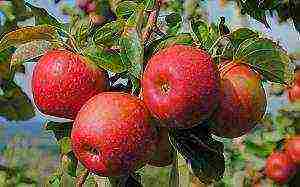Content
This article covers the best hot pepper varieties. They are of early, middle, late ripening. They grow in various conditions. Certain types of indoor hot peppers.
The best varieties of indoor peppers
Indian summer
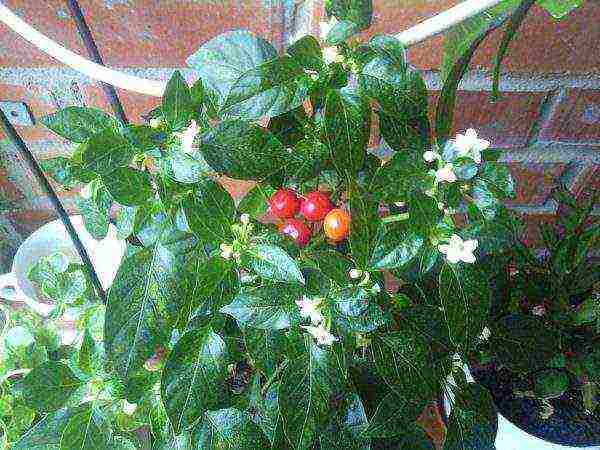 Indoor pepper Indian summer
Indoor pepper Indian summer
Shade-tolerant, undemanding plant. It can grow on a loggia for several years, or on the ground as an annual plant. The bush is not high, 30-40 cm, it is covered with small spherical peppers, differing in color variety. Red is used without additional processing. The wall thickness is 3 mm, the taste is sweetish with sourness, spicy.
Hungarian yellow
 Hot peppers Hungarian yellow
Hot peppers Hungarian yellow
Early ripe, adapted to cold weather, small bush, about 25 cm... The vegetable looks like a cone hanging down. In the process of formation, yellow, when ripe, turns red. The wall thickness in the section is 4 millimeters. Juicy, sweetish, semi-sharp.
Goldfinger
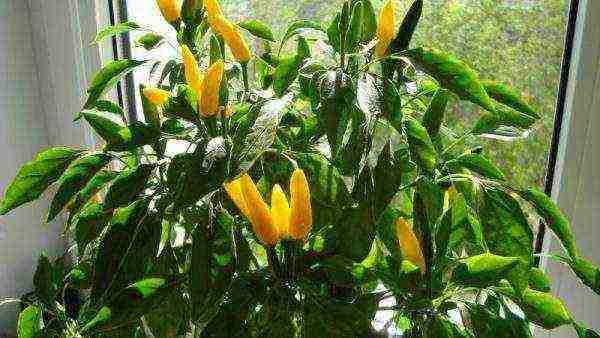 Hot pepper Goldfinger
Hot pepper Goldfinger
Light-loving, early ripening plant, profusely flowering, 25 cm high. Pods up to 5 cm long, yellow... It grows well and gives a lot of production on lighted windowsills.
The plant is grown as an ornamental plant with inedible fruits.
Filius Blue
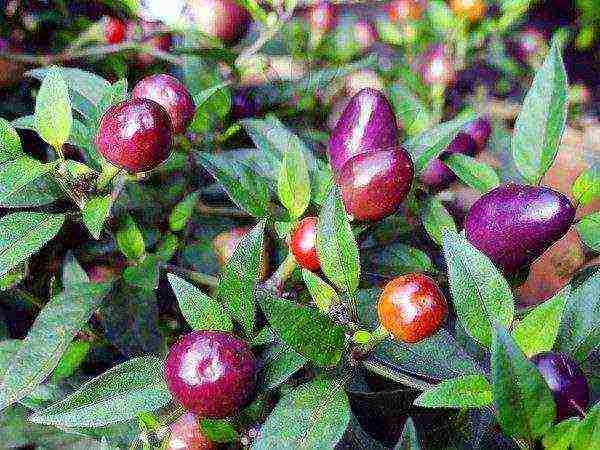 Hot pepper Filius Blue
Hot pepper Filius Blue
A beautiful perennial plant with fruits that can be eaten. The height of the bush reaches 20 centimeters, unripe peppers are purple, the red color indicates its ripeness. For the plant, it is necessary to provide a sufficient amount of light, moderate watering, moist air. If grown in an apartment and properly cared for, it will bear fruit for a whole year.
The best spicy peppers outdoors
Adjika
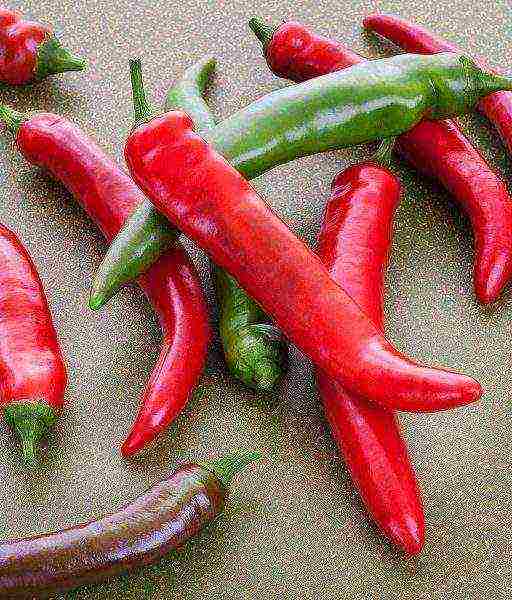 Hot pepper grade Adjika
Hot pepper grade Adjika
Medium early, tall. Grows up to a meter in height. The bush is strong, lush. The fruits are large, conical, bright, red, spicy with a pleasant aroma.
For mother-in-law
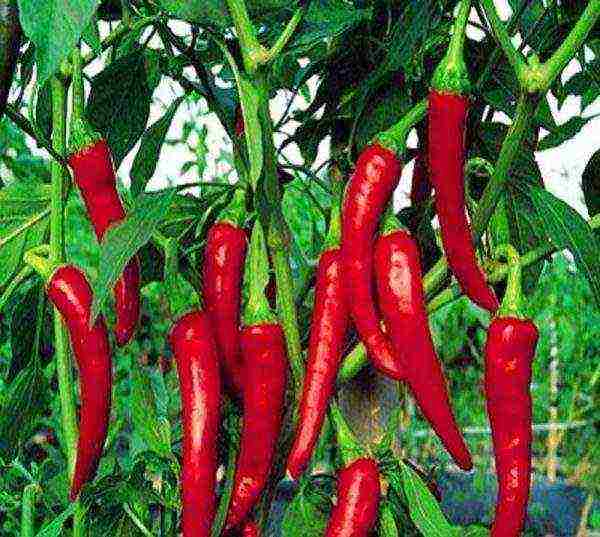 Hot pepper grade For mother-in-law
Hot pepper grade For mother-in-law
Early, with a high yield. Below average height, cone-shaped fruits, red, strong smell, pungent taste.
The Queen of Spades
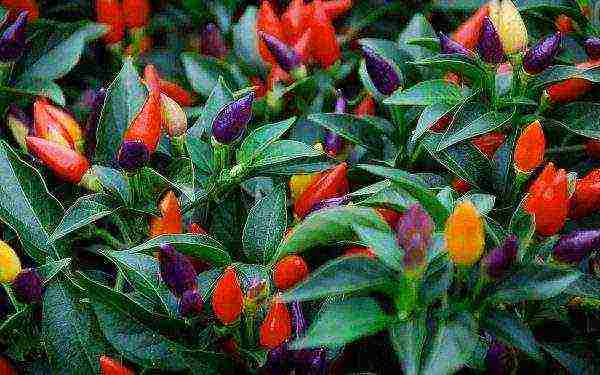 Hot pepper grade The Queen of Spades
Hot pepper grade The Queen of Spades
Mid-season. Bushes are small, spherical. There are a lot of fruits, of varying degrees of maturity and color. It looks very nice. Grows well in shady areas. The fruits are cone-like, growing upward. The taste is spicy with sweetness.
Dragon tongue
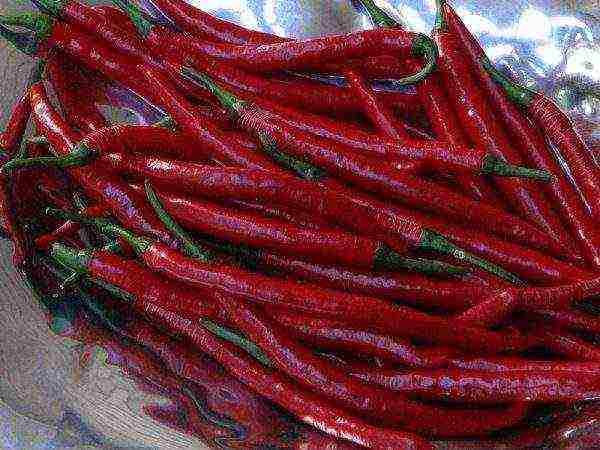 Hot Pepper Dragon's Tongue
Hot Pepper Dragon's Tongue
Mid-season. The bushy plant grows up to a meter in height, unpretentious to care for. Ripe fruits are long, rich red color, burning, with a pleasant aroma.
Goes to the production of paprika.
Bully
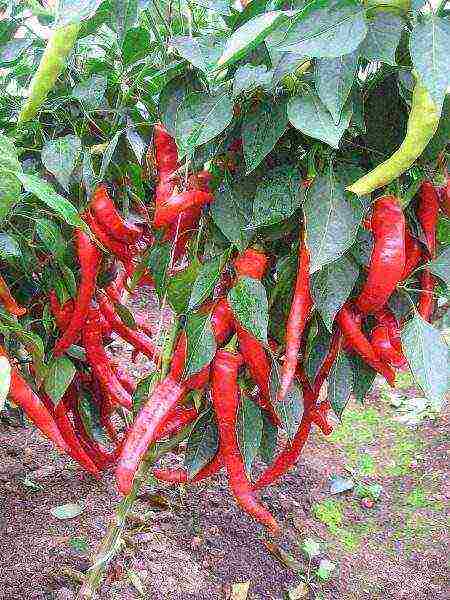 Hot pepper Bully
Hot pepper Bully
Mid-season. The bush is small, semi-spreading, grows up to 70 cm... The fruits are long, proboscis-shaped, red. In a section with a thickness of 1.5-2 mm. High resistance to cold weather, high yield. Low aroma, semi-pungent taste.
Doesn't like shadow.
The best varieties of early ripe peppers
Impala
 Hot Impala Pepper
Hot Impala Pepper
It tolerates heat well, ripens early, brings a large harvest. The bush is massive, reaches a height of 70 cm, dotted with peppers... They are large, weighing 80 grams. When ripe, it becomes deep red. The vegetable has an interesting taste and pungency. Reference! Resistant to tobacco mosaic virus.
Wit
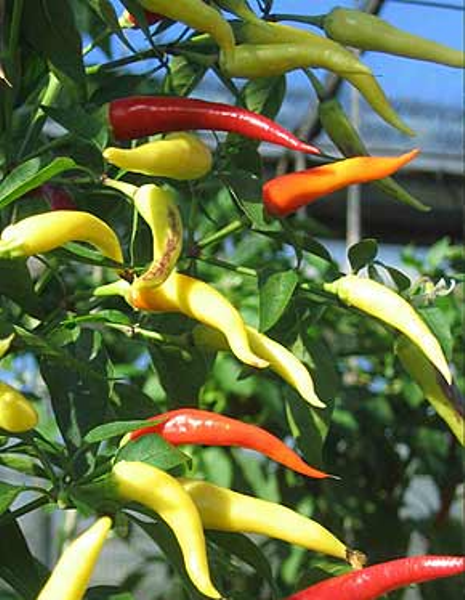 Hot pepper grade Wit
Hot pepper grade Wit
Early ripe. Grows in open and closed ground. The bush is small, medium height, large-leaved. Fruits are red, with a dark shade, shiny, conical, growing upwards. The yield is high. It is not affected by diseases and temperature changes.
The variety tolerates drought well, but cannot tolerate poor lighting. Suitable for drying, storage, salting.
Tula
 Hot pepper Tula grade
Hot pepper Tula grade
Early ripe. Grown in the open field and under a film. Medium bush, cone-shaped peppers, large, hot, red. The variety is high-vitamin, fruitful, plastic.
The best mid and late ripening varieties
Vizier
 Hot pepper vizier
Hot pepper vizier
Late maturing. Grows indoors. The fruits are red, weighing up to 20 g. Medium spicy taste. The yield is good. It is used for the manufacture of paprika, salt, conservation.
Astrakhan
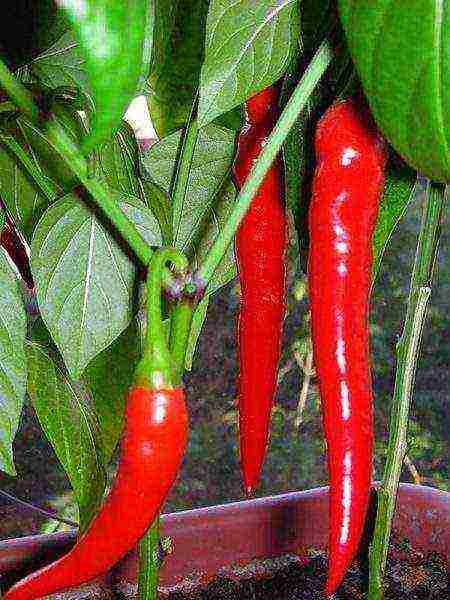 Hot pepper grade Astrakhansky
Hot pepper grade Astrakhansky
Mid-season ripening period. High yield, cultivated in open field with different climatic conditions. The fruits are small, red. The taste is acutely pungent. The pungency is determined by the capsaicin content. It is successfully used for culinary and medicinal purposes. Pepper tincture will relieve sciatica. Fresh pulp will heal abscesses. Hot pepper stimulates appetite, helps with pain, fever.
Ram horn
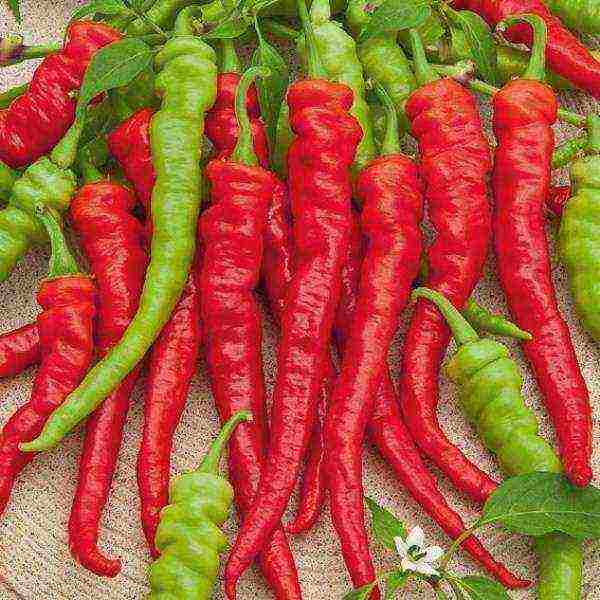 Hot Pepper Lamb Horn
Hot Pepper Lamb Horn
Mid-season. Unpretentious in cultivation, but does not tolerate stagnant water. With proper care, it gives a high yield. The pods are elongated, twisted, like a ram's horn. The taste is not very pungent when well watered. If there is little watering, hot weather, the pepper will grow sharper. Suitable for trade, export.
Cayenne
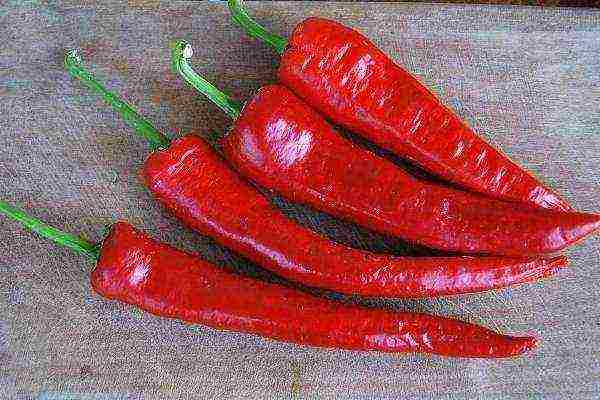 Hot pepper grade Cayenne
Hot pepper grade Cayenne
A relatively new species. It grows in greenhouses and in a room (seeds are pre-planted for seedlings). The yield is high. Fruits are thin, of medium length. The bushes are tall, reaching one and a half meters. It is imperative to tie up. The taste is relatively pungent. It is used for cooking, canning, processing into powder.
It is planted in open ground with seedlings.
Tabasco
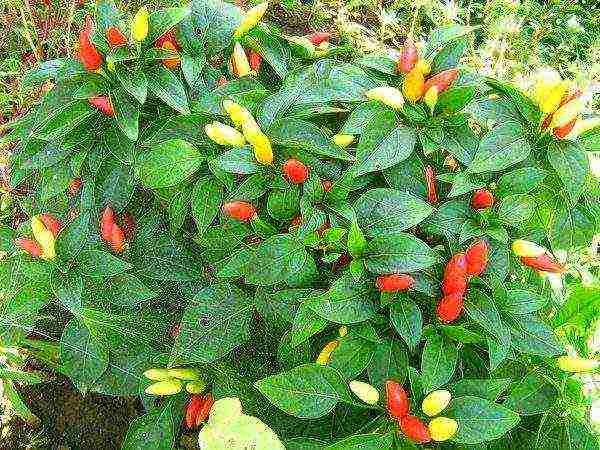 Hot pepper Tabasco
Hot pepper Tabasco
Shrub hot peppers. Grows on bushes in bunches upward. Fruits are orange-red, small. The pulp is juicy, fleshy, spicy. Productivity is high, disease resistant. The famous Tabasco sauce is made from this variety.
Popular varieties for giving
Among summer residents and owners of personal plots, Double Abundance, Superchili, Ogonyok are very famous.
Double abundance
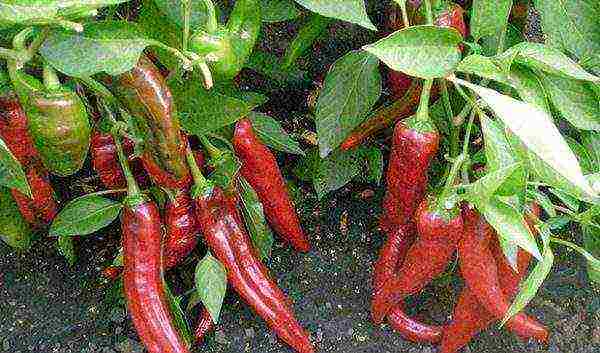 Hot Pepper Double Abundance
Hot Pepper Double Abundance
Early ripe variety. Grows in open and closed ground. Ranks first in terms of yield. Peppers are brightly colored, weigh up to 80 g... Dry peppers can be stored for several years without losing their appearance and taste. Equally good fresh and canned. Resistant to disease and heat.
Superchili
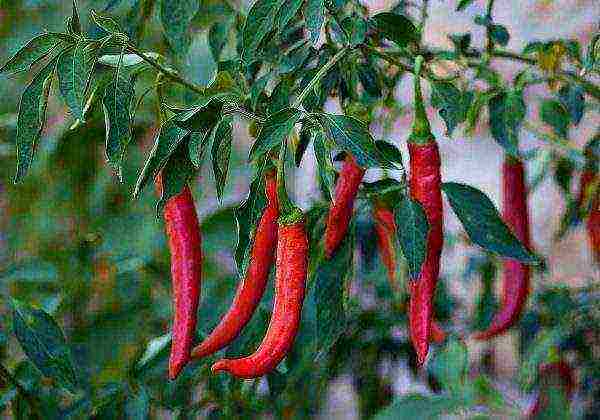 Super chili hot pepper
Super chili hot pepper
An early ripe hybrid variety. The yield is high, the taste is pungently burning. Super chili peppers are large, located under the foliage. Fully ripe fruits of almost cherry color... Eaten fresh, dried, salted.
This variety should not be grown next to other peppers in order to avoid over-pollination of the plants.
Twinkle
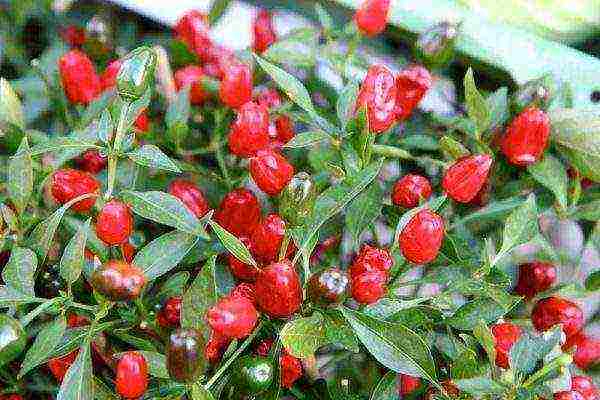 Hot pepper Spark
Hot pepper Spark
Spark is a fairly well-known, popular variety. Medium early ripening. Feels great outdoors and greenhouses. Fruits are not large enough, bright red. There are many of them on the bushes, they look like bright lanterns. Taste with special pungency and peppery aroma. This is due to the increased content of coloring pigments and solids. The fruits are dried naturally, stored in a glass container under a lid.
Resistant to bacteriosis and verticellosis wilt.
From such an abundance of piquant peppers, you can choose those that are suitable for taste, color, ripening time, types of storage, specifically for this area.
Hot peppers are a storehouse of useful vitamins and minerals. More and more summer residents of our country are beginning to grow this miraculous product in their plots, thereby taking into account the advice of experts on the benefits of eating spicy fruits.
Hot pepper - description
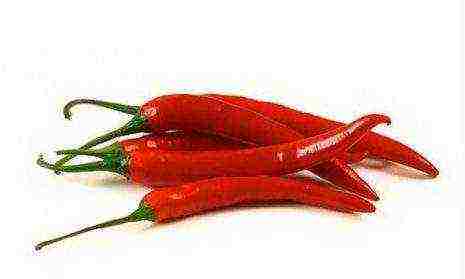
Hot pepper, which arrived in Russia from far southern countries, has become very popular in recent years. Increasingly, this spicy seasoning can be found on the table and in the composition of dishes.
The birthplace of the famous bitter fruit is India and Central America. There, this product has been growing since time immemorial, and therefore everyone treats it as we do, for example, to bread. Hot seasoning is added throughout.
This is interesting: hot peppers are also called "chili", "hot", "bitter". "Chile" in the Aztec language means "red". This is no coincidence - the lion's share of hot pepper varieties have red fruits.
The varietal variety of hot peppers is amazing (more than 3000 varieties). Peppers vary in color, pungency, and appearance.
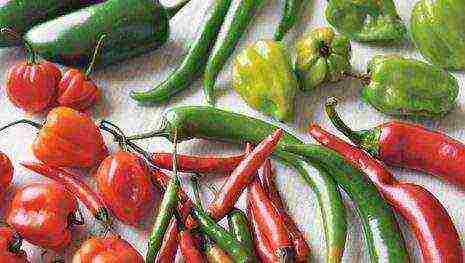
For reference: the measurement of the degree of hotness of peppers is carried out on the Scoville scale (SHU). So, for example, in sweet peppers this indicator is 0, ordinary hot chili contains 100-500 scovillas, and the one included in the book of hotness records - 1 million scovillas.
Characteristic
Capsicum is a member of the nightshade family. All hot peppers are combined into a special genus Capsicum, which determines the presence of the pungency of the fruit. This genus includes 5 domesticated types of hot peppers:
- Capsicum annuum;
- Capsicum chinense;
- Capsicum baccatum;
- Capsicum frutescens;
- Capsicum pubescense.
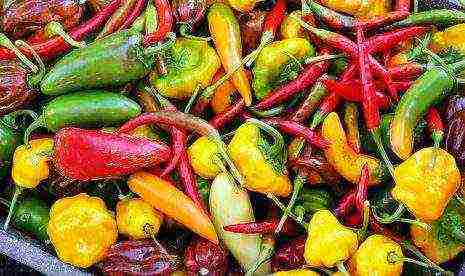
In addition, twenty-six wild species are known.
American chemist W. Scovill proposed his own table for measuring the degree of pungency of peppers, which is calculated from the amount of capsaicin substance (it gives pungency to peppers).
Hot peppers are represented by plants, which can also be of different heights (determinant, semi-dent and indent). The leafiness is also different, depending on the variety. The fruits of hot peppers almost always have a strongly elongated conical shape. Less common varieties with fruits in the form of balls, prisms.
As well as sweet peppers, hot peppers at the stage of technical ripeness have a light green color, which most often turns red when ripe. The skin is always rough, ribbed, dense.
Fact: The fruits of some varieties have a great pungency when not ripe.
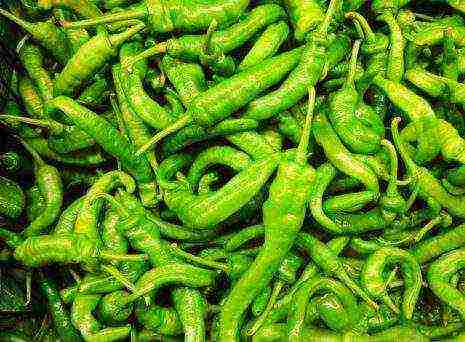
As a rule, all chilli peppers grow small in size. There are specimens whose weight barely reaches five grams. The taste of the fruit is also represented by various shades of pungency, so you can always choose a variety "for yourself" - with a weak spice, with a strong piquant aroma or "thermonuclear".
Properties
Hot peppers have truly unique properties that allow them to be used not only in cooking, but also in medicine and other fields. The fruits of hot pepper deserve such demand due to the presence in their composition of the substance capsaicin - an alkaloid, which is a colorless substrate with a burning taste. Capsaicin, found in the peel of peppers, has a beneficial effect on the human body.
Fact: Many people think that spicy means harmful. However, based on the results of various studies, it has been proven that eating hot peppers improves health, helps you lose weight, and even cures some forms of cancer.

Peppers are versatile to use. For example, in cooking, they can be added to different dishes by simply cutting them into small pieces. People eat not very spicy varieties without any additives at all. Thick-barked fruits are usually added to marinades and pickles. And peppers with thin skin are dried or ground into powder, seasonings are prepared.
It is not entirely customary for our compatriot to add spices to absolutely all dishes, for example, like the inhabitants of Thailand or Mexico. However, those who often use pepper as a seasoning will note that it gives the dish not only pungency, but also sophistication and piquancy. Yes, even a small proportion of the presence of this product in a dish will make it unique. Thanks to this unusual property, peppers can diversify the menu - by adding it in different proportions, you can experiment constantly.
This is interesting: especially hot peppers are in harmony with garlic, basil and coriander.
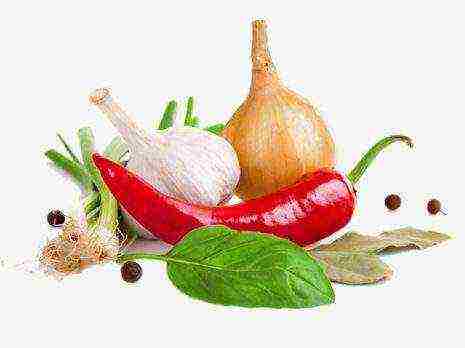
For medical purposes, various infusions, decoctions and medicines are prepared from hot peppers. Hot peppers are especially often included in warming ointments - they soothe pain in sciatica, relieve swelling and normalize blood circulation.
The useful properties of this product can be listed endlessly. So its main advantages include a beneficial effect on human vision. Fruits help to normalize the work of the heart and blood vessels, warn against the development of incurable diseases. The action of peppers also extends to men's health - the work of the prostate gland is normalized. And women can lose weight with the help of peppers. In cosmetology, this product is added to various masks used for hair loss.
Many experts even argue that people who regularly consume at least a small amount of hot peppers every day produce more happiness hormone "endorphin" than those who do not eat chili peppers.
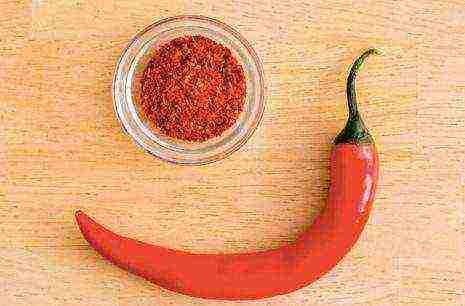
Please note: eating hot peppers without any norm is dangerous! In addition, it should not be eaten by children, as well as pregnant and lactating women.
The benefits of hot pepper:
- the composition of pepper includes retinol, ascorbic acid, vitamins E, P, B. These elements are able to cope with migraines, viral lesions and colds;
- helps to digest heavy food;
- the presence of hot pepper in a dish can reduce the number of calories in half;
- contributes to the normalization of the intestines;
- eliminates the causes of thrombosis;
- saturates the blood with useful components;
- helps to get rid of many "female" diseases;
- improves hair and nail growth;
- fights overweight;
- pepper restores potency and increases libido.
To whom hot pepper is contraindicated:
- people suffering from high acidity of the stomach;
- diabetics;
- people with diseases of the liver, intestines;
- those who have an ulcer or gastritis.
The best varieties of hot peppers
The modern choice of hot pepper varieties is so diverse that gambling gardeners buy several varieties at once in order to watch with pleasure the growth of such identical, but at the same time, different peppers. For the relatively short history of cultivating this variety of peppers, favorite and more preferred varieties have already appeared among summer residents.
Double abundance F1
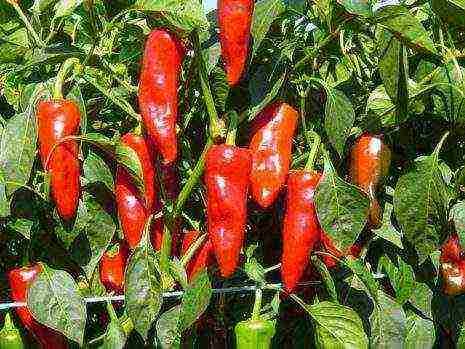
A high-yielding hybrid that can be grown in a variety of ways, and whatever the scenario, it will give a decent harvest of hot peppers of excellent quality and appearance.
An early ripe hybrid bears fruit as early as 100 days after sowing. The peppers reach biological maturity by day 115.
A feature of the variety is its consistent formation and ripening of fruits. With proper farming techniques, you can harvest up to five crops in one season. The recommended planting scheme is 2-3 plants per square meter.
Plants of a hybrid of a determinant type. Bushes grow no more than 80 centimeters in height. They have a strong trunk and good foliage. The bushes endure windy weather and cold snaps.
The resulting fruits have a standard shape for this variety of peppers. The peppers are elongated, proboscis, narrow. Pepper length reaches 18-20 centimeters, weight - 70 grams. The color of ripe fruits is bright red.
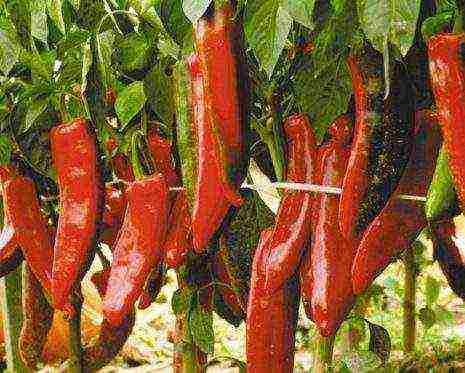
Due to their thick rind, these peppers are suitable for cooking and freezing.You can also dry them - in this form, peppers are stored for more than a year.
Hybrid "Double Abundance" perfectly tolerates prolonged elevated temperatures. Many typical diseases and viruses do not take it either.
Double abundance is a high-yielding variety. When grown in greenhouse conditions, up to 40 fruits, quite powerful for hot pepper, can be harvested from one bush. They are all the same shape and size, they are perfectly stored.
Fact: Double Abundance peppers do not taste very hot, so they can be eaten fresh
Burning bouquet
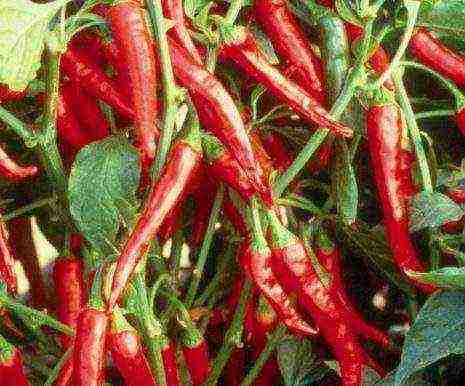
An early variety of hot pepper, which begins to bear fruit as early as June. It takes root well both in the open field and in the greenhouse. During the season, you can collect two or three crops by sowing seeds for seedlings in February and July. Full harvest is in August-October.
Determinant plants grow up to half a meter in height and are compact in size. Large leaves are few in number, so the peppers grow and ripen, basking in the sun and gradually turning red. The advantage of the variety is that the undersized bushes perfectly support the weight of light fruits and do not need to be tied up. In addition, plants are almost never affected by viral and fungal diseases. The bushes tolerate drought well, but they are demanding on lighting - with a lack of light, the bushes stretch out strongly, and little ovaries are formed.
The fruits are medium in size: the weight of one pod is 15 grams, and the length is 12 centimeters. The shape of the peppers is standard - strongly elongated, conical. The rind is thin. The pulp is fleshy, not very hot, with a special aroma of paprika. The variety is excellent for fresh consumption and pickling.
When growing peppers with the calculation of 3 plants per square meter, you can collect 2 kilograms of penis-sharp fruits. The variety is considered to be high yielding and very popular among Russians.
Chinese fire F1
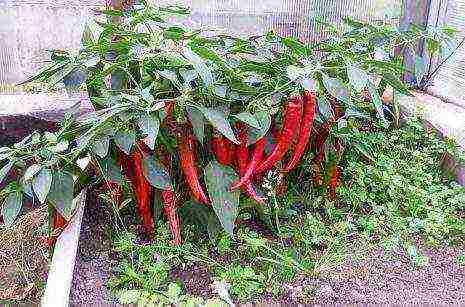
Early ripe hybrid - the first fruits ripen 90 days after sowing seeds for seedlings.
Plants are determinant - bushes grow no more than 65 centimeters in height. Plants have a strong foliage, branch abundantly. A garter to the support is required.
Fact: Chinese fire is one of the hottest hot peppers.
Seedlings can be planted in May both in open ground and in a greenhouse.
The peppers are small in size, but rather weighty. The weight of one fruit is on average 70-75 grams. Length - 25 centimeters. The peppers have a strongly elongated conical shape, curling slightly at the end. At the stage of technical ripeness, the surface of the pods is colored light green, which, when fully ripe, turns dark red.
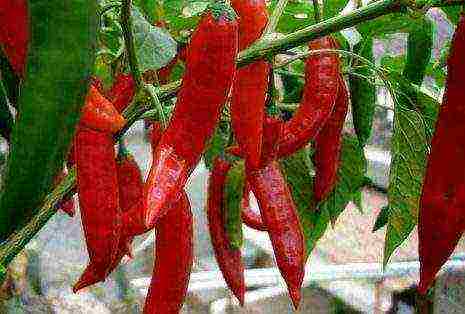
The hybrid is valued for its high resistance to all kinds of diseases, including the tobacco mosaic virus, bacteriosis. The bushes can withstand weather changes, temperature drop, drought. The fruits are stored for a long time without losing their pungency and pleasant spicy aroma.
You may be interested in:
The hybrid is considered a high-yielding species. When grown on one square meter up to four bushes, almost three kilograms of a quality product can be harvested from it.
Peppers of the "Chinese Fire" variety are recommended to be processed for making seasonings for main dishes. Fans of spiciness can try these peppers fresh.
Trinidad Small Cherry
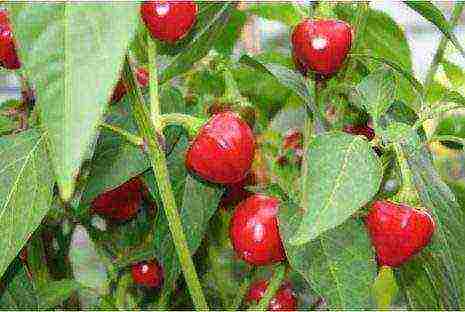
A super-early variety of hot pepper, ripening within 75-80 days after sowing the seeds. Quite an interesting variety, characterized by a lushly growing outwardly attractive plant that grows up to a meter in height. Bushes with powerful stems and large leaves are similar to a shrub, which is strewn with dozens of small yellow-red fruits. The peppers themselves are shaped like large cherries (up to 2.5 centimeters in diameter). The pods are juicy, soft, with a wall of medium thickness. The weight of one pepper is 15 grams. The pungency of ripe peppers is 160 thousand units on the Scoville scale.
Note: you need to eat fully ripe fruits - their rich taste and spicy aroma is revealed only at the moment of biological maturity.
The unusual taste of this variety is that peppers, along with a sharp taste, have a pleasant cherry aroma.
Trinidad Small Cherry is a fairly productive variety. From one bush, you can collect up to a kilogram of a burning product that can be used in any form. The pods are dried, added to dishes, and also made into blanks.
Tip: This variety can be grown on a windowsill as an interior decoration.
Indian elephant
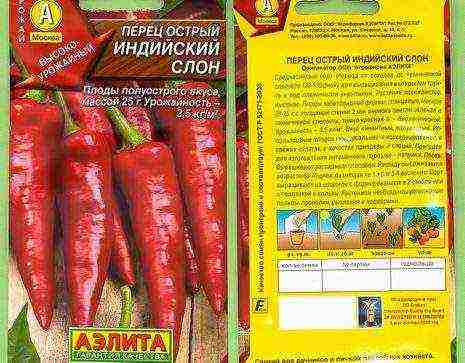
This variety is suitable for those who like spicy, but not pungent food. The pungency of the peppers is medium. The fruits have a pleasant, delicate peppery aroma.
The Indian elephant belongs to the group of mid-season varieties. The fruit needs 140 days to fully ripen. The variety bears fruit well and is distinguished by the amicable ripening of outwardly very beautiful fruits.
Plants of the Indian Elephant variety grow compact, rather strong, with a small foliage, 60-70 centimeters high. In greenhouse conditions, the height can reach more than a meter, so sometimes the bushes need support.
At the stage of technical ripeness, the fruits are light green. Upon reaching biological maturity, the thick, glossy, slightly ribbed rind acquires a rich red hue. Pepper pods have an elongated conical shape. The mass of the pepper is 25 grams.
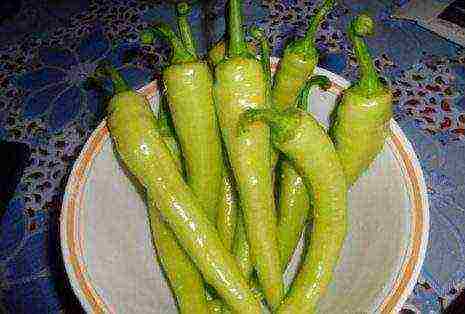
The Indian elephant has a good bush yield. From one square meter, you can collect up to three kilograms of large, weighty peppers.
The fruits of this variety are universal. They can be eaten fresh, added to various dishes, and also used for canning. Even after heat treatment, the peppers do not lose their spicy paprika aroma and pleasant tangy taste.
Miracle of the Moscow region
One of the varieties most often grown by domestic gardeners. Has gained fame due to its extremely high yield - each bush produces more than one kilogram of large fruits (up to 20 peppers per bush).

Plants of the variety are semi-determinant, often growing more than a meter in height (maximum 120 centimeters). Strong stems are overgrown with powerful branches with small foliage. Bright red cone fruits ripen among the foliage. Peppers weigh an average of 50 grams. They stretch in length up to 25 centimeters, and their diameter is 3 centimeters. The peel is dense, glossy, thick - up to 2 millimeters. There is a lot of pulp. Its taste is specific with a small amount of pungency.
Fact: When you add peppers to dishes, the food gets a slightly spicy, piquant aftertaste.
The variety is excellent for growing in difficult climatic conditions. The bushes tolerate bad weather, low temperatures, waterlogging, strong winds and lack of sun. Plants rarely get sick. You can grow peppers of this type both in a greenhouse and in unprotected soil.
The ripening period for the fruits of the Miracle of the Moscow Region variety is about 100 days. Peppers can be added to salads and snacks already in their technical ripeness. Fully ripe pods are great for drying and seasoning.
Jalapeno
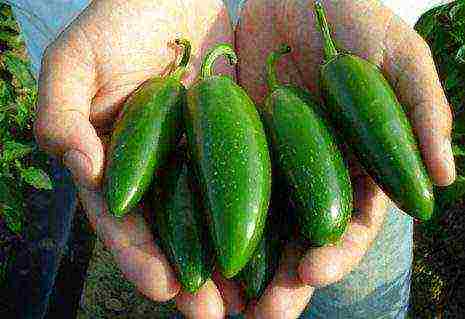
A well-known Mexican variety that amateur gardeners are happy to grow on almost all continents. The variety is especially popular due to its high yield and strong pungency of ripening peppers.
The bushes grow a meter high, but because of the rich green crown they look very sweeping and voluminous. Each bush is overgrown with 25-30 egg-capsules. Miniature fruits are formed in the form of "pot-bellied" cones 8-9 centimeters long. But small peppers are considered the best - they contain all the relish of this variety. During the technical stage, the skin is green, which gradually turns to red. The pulp is most acute when unripe. And with ripening, the pungency decreases. For this reason, it is better to use these green peppers. Unripe pods are added to food, pickled.And the red ones are processed into seasoning. They are delicious smoked.
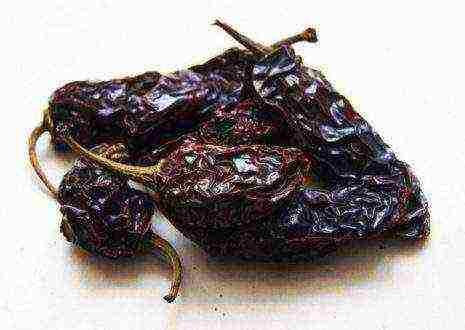
Fact: Mexicans use unripe Jalapenos to make their legendary chipotle condiment.
Jalapenos are recommended to be grown in greenhouse conditions. The variety is especially whimsical to a large amount of heat and moisture. If the plants are not provided with these two essential components, then they shed flowers and ovaries.
Please note: due to the fact that Jalapeno peppers contain a large amount of capsaicin, you need to work with such a pepper with gloves, otherwise you can burn your skin.
Habanero
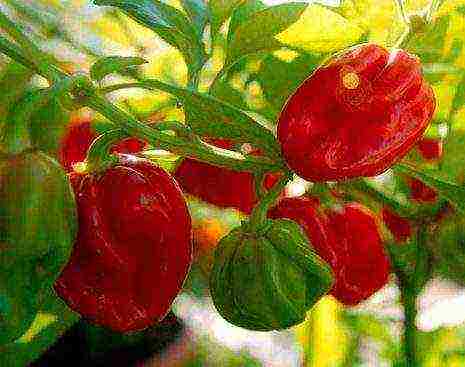
The variety, bred in Cuba, is considered one of the hottest peppers in the world. On the Scoville scale, the pungency ranges from 100 thousand to 475 thousand units. The fruits have a pronounced peppery flavor. Habanero is a very productive hot pepper variety. Up to 90 fruits are harvested from one bush.
Plants produce small, ornamental, heart-shaped fruits. Despite its compact shape, the fruits grow quite weighty - the average weight of the pod is 30-50 grams.
The Habanero variety is divided into several varieties. These species differ in color and degree of pungency.
Types of Habanero:
- Habanero chocolate. A variety that produces fruit with a rich chocolate color. This type of pepper is bred in Jamaica and Trinidad. Peppers have a specific "smoky" aftertaste. Their severity is 300–475 thousand units;
- Habanero Red Savina - distinguished by the juiciness and sharpness of the peppers obtained;
- Habanero Red Caribian. Very spicy fruits;
- Habanero Tigerpaw-nr. American variety. The fruits are bright orange in color. Sharpness - from 265 to 368 thousand units;
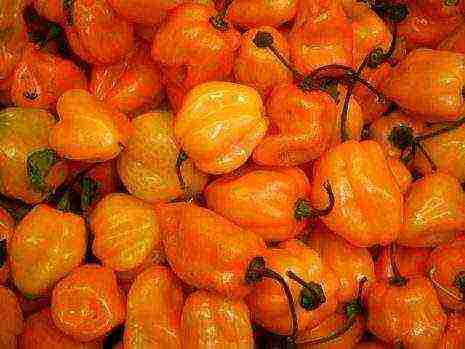
- Habanero Fataly. A variety of pepper from South Africa. Fruits are orange or chocolate colored. Semi-sharp (from 125 to 325 thousand units). The taste contains lemon and peach aromas;
- Habanero White. A rare and difficult to grow type of Habanero hot pepper. The pungency is from 100 to 350 thousand units.
Habanero peppers are renowned for their health benefits. The fruit contains vitamins A, B, C, D, trace elements and alkaloids. Peppers have anesthetic, antibacterial properties. The use of hot peppers has a beneficial effect on the entire body as a whole.
Fact: Habanero pepper is a powerful aphrodisiac. It is able to stimulate the production of "happiness hormones".
Astrakhan 147
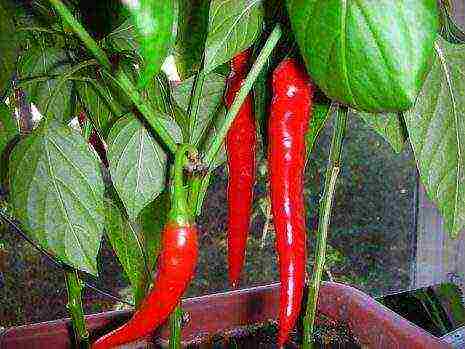
A mid-season and high-yielding variety of domestic selection (bred in 1943). One of the most famous varieties in our country. Perfectly adapted to various growing conditions. It can grow easily in rather harsh environmental conditions. However, for better productivity during periods of cold snaps, it is better to cover the beds with peppers with foil or agrofibre.
The first fruits ripen on the bushes by 120 days, and by 140 they reach full maturity.
The variety is distinguished by long and consistent fruit ripening. Fruiting can take several months. Plants of determinant type (up to 50 centimeters). The bushes are compact, not sprawling, half-stemmed. Numerous miniature fruits are formed.
Small pods are shaped like cones. They are located on the bush drooping. At the stage of biological maturity, they are scarlet. The skin is smooth and shiny, the walls are thin. The pulp is loose. The pods weigh only 10-12 grams.
The variety is distinguished by good adaptability to various weather conditions.
The yield reaches 3.5 kilograms of fruit per square meter. The fruits have a universal purpose. They can also be dried and powdered.
Cayenne red

Varietal group of hot red varieties from America. All types of this pepper are characterized by a strong pungency and an elongated fruit shape.
Plants of cayenne peppers are tall, growing up to 150 centimeters in height (a mandatory garter to the support is required). During the period of fruiting, they are strewn with bright red cones. Up to 40 narrow and long (up to 12 centimeters) peppercorns can form on one bush.
The fruits on the bushes ripen and form unevenly over several months. The peppers themselves are thick-peeled, with a shiny glossy surface. The pungency is moderate, so peppers can be added to various dishes, as well as seasonings and pickles from them.
Please note: Cayenne peppers produce the best yield when grown in a greenhouse.
Cayenne peppers are popular for their health benefits. Peppers contain a number of useful elements that can heal many ailments. Essential and fatty oils contained in bitter pods are of great value for medicine.
Tips for growing hot peppers
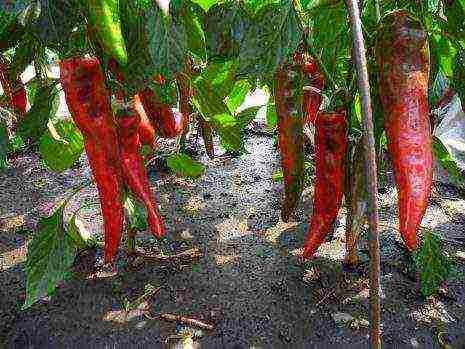
Just like sweet peppers and other cultures in general from southern countries, hot peppers love warmth and light. In terms of care, it is not as whimsical as its sweet brother, it is quite easy to grow it. It can always give a good harvest, but if you want to get healthy bushes with a mass of red pungent pods, you need to competently approach the cultivation of this healthy vegetable.
Basic rules for growing:
- It is necessary to take into account the climatic conditions in which the pepper will be grown. Based on this, you need to select the right variety with the optimal ripening period, disease resistance and bad weather conditions. This will determine the timing of sowing seeds for seedlings, and planting in a garden. Keep in mind that the age of the seedlings at the time of planting in the ground must be at least 60 days.
- Pay attention to the expiration date of the seeds - younger ones, 1-2 years old, have better germination.
- Peppers have a rather weak root system, so the seedlings do not tolerate picking well. If possible, sow immediately in separate containers (preferably peat ones).
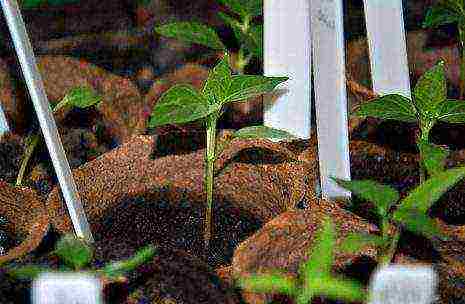
- It is necessary to germinate seedlings in the right conditions - the room temperature should be + 25-28 degrees. After germination, it is reduced to +18 so that the shoots do not stretch out. And after a couple of weeks, a warm microclimate is established again.
- Peppers grow well in sandy loam light soils. The soil must be moist and well-drained. Sand or peat can be added to the soil to achieve good permeability.
- Don't forget about nutrition. Top dressing is arranged at least once during the seedling period and three times - after the bushes are in the garden.
- Seedlings will grow healthy if they are provided with a constant supply of sunlight and heat. Avoid drafts.
- Seedlings take root better in open ground, if 10 days before planting they begin to harden - take boxes with seedlings out onto the veranda.
- The first inflorescence that appears will need to be removed. This will provoke the early appearance of new ovaries.
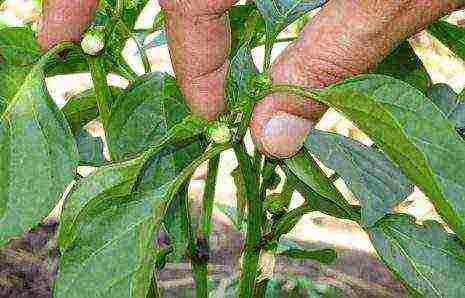
- Do not plant hot peppers next to sweet varieties. Otherwise, the latter will acquire a pungent taste.
- Watering should be done regularly, in moderation. If you rarely water your pepper beds, they will be spicier.
- To get more harvest, remove the peppers in the technical stage: new fruits will immediately begin to form in their place.
- Low-growing varieties can be transplanted into pots at the end of summer and continue to grow at home in winter.
- Thick-walled peppers are used in seasonings, pickles, marinades, and preservation. Thin-skinned peppers are processed into seasoning.
- As you can see, growing a healthy spice seasoning in your garden is not a big deal. And how pleasant it will be to harvest hot peppers and enjoy the unusual taste of ordinary dishes all year round.
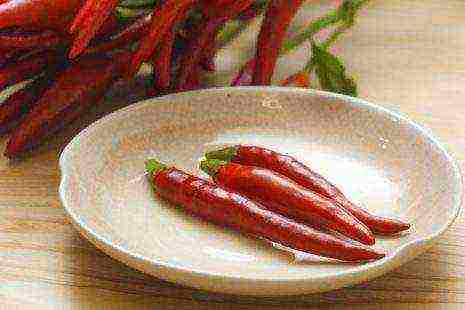
Reviews
Alexandra
My husband and I are lovers of spicy dishes. We add hot peppers to any food: meat dishes, soups. Every year I plant several varieties of hot peppers in my garden. Over the years of cultivating this variety of peppers, I have tried, probably, a hundred different varieties. This year I will also plant several species at once. I cannot single out my favorite varieties, because each pepper has its own advantages.Some of the most frequently planted in our garden are "Chinese Fire", "Ram's Horn", "Carmen", "Ripe Cherry" and others.
Valeria
I always grow a couple of hot pepper bushes at home, on the windowsill, as I love everything spicy. The last time I planted the variety "Indian Summer". Very beautiful peppercorns were drawn in the picture. The variety is miniature, fruitful. It grew well in a pot. Fruits are small, in the form of balls, spicy, aromatic, not very spicy. I dried some of them, the rest were added to soups, side dishes, salads. For salting, I think these peppers will also work.
Nina
I liked the Medusa variety. An excellent pepper for growing on a windowsill. No hassle and almost no care is needed - it grows calmly. By themselves, the bushes are small, 15-20 centimeters in total in growth. It looks like a flower in general. In July, the pods ripen. There are many of them on one bush, 10 pieces each. I pollinate the flowers myself. Pepper bears fruit well, peppers grow and ripen together. You can grow this variety for many years, but I sow new seeds every year. For my taste, the peppers of this variety are very hot, although for other family members it is just that. We add to different dishes - we always get a very tasty combination, coupled with the spicy aroma of hot pepper.

